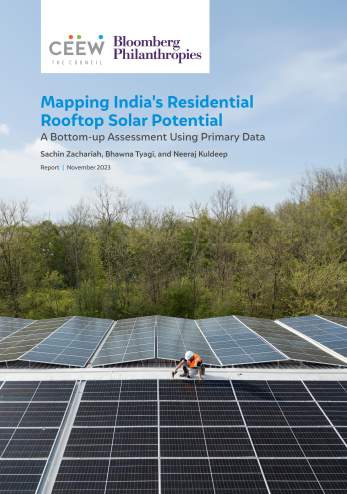Other Publications
Governing Clean Energy Subsidies
What, Why and How Legal
Arunabha Ghosh, Himani Gangania
August 2012 | Energy Transitions, International Cooperation
Suggested Citation: Ghosh, Arunabha and Himani Gangania. 2012. Governing Clean Energy Subsidies: What, Why and How Legal. Geneva: International Centre for Trade and Sustainable Development
Overview
This report focuses on subsidies for electricity from renewable energy (RE) sources or for energy efficiency. It examines how the different logics for clean energy subsidies converge or diverge from the logic of maintaining a robust and rule-bound global trading system. It analyses in detail the government support measures in six countries – Brazil, China, Germany, India, Spain, and the US – that have the largest installed RE capacities and have registered high annual rates of growth in RE investment in recent years. Further, it provides recommendations that would offer legal and policy clarity to reconcile the fundamental tension while governing the clean energy subsidies - between maintaining non-discriminatory trade practices while promoting greater and faster adoption of clean energy.
Key Findings
- Investments in RE rose 32 per cent in 2010 to a record USD 211 billion. Financial new investment (asset finance, venture capital, private equity, and public markets) in developing economies (USD 72 billion) exceeded that in developed countries (USD 70 billion).
- In 2012, the share of RE in electricity generation remained at 8 per cent of power capacity and 5.4 per cent of electricity generation
- Subsidies to increase energy access are not necessarily net costs for governments if other human development benefits are accounted for.
- Subsidies that increase deployment of new technologies increase learning and help to bring costs for RE closer to those of non-renewable sources.
- Individual country policies, emerging disputes and lack of clarity on exceptions to WTO rules underscore the tension between maintaining non-discriminatory trade practices while promoting greater and faster adoption of clean energy.
Clean energy subsidies have multiple rationales, impacts, and counteractive reactions

Clean energy subsidies in leading RE countries
- China’s Golden Sun programme offered subsidies to cover installation costs for both grid-connected and off-grid projects.
- Direct financial transfers have been offered for covering the capital costs for off-grid installations, such as solar home systems (Bangladesh), solar lanterns (India) or solar and mini-grid biomass projects under Brazil’s Luz para Todos Electrification Programme.
- The California Solar Initiative offered subsidies to increase solar photovoltaic (PV) access to low-income households and in new housing construction; low-interest loans were offered for energy efficiency building retrofits in Texas.
- Brazil’s National Development Bank has offered capital cost financing at attractive rates.
- Germany’s RE Heat Act offers funding support to increase the share of renewable energy sources for water and space heating in buildings.
- Investment tax credits have been used in India, Sri Lanka and the US to attract more foreign capital in RE.
- China’s RE law required utilities to purchase all RE generated; India introduced renewable purchase obligations (RPOs) in 2003, and Texas’ regulations led to billions of dollars of investment in wind capacity.
Renewable energy’s overall share in electricity remains small, but a rising proportion of new capacity and generation (percentage)

Source: McCrone, Angus et al. (2011) Global Trends in Renewable Energy Investment: Analysis of Trends and Issues in the Financing of Renewable Energy, UNEP and Bloomberg New Energy Finance, p. 25.
Key Recommendations
- International institutions with rules governing trade, energy flow and climate change need greater coordination. A new framework for trade rules on clean energy could consider the adverse and non-adverse impacts on other countries and the purpose of measuring energy access and boosting clean energy generation capacity.
- Use governmental, inter-governmental and non-governmental sources of information on clean energy subsidies but standardise them to enable inter-country comparisons. A common metric to count subsidies could help in increasing transparency.
- Investigate the relationship between rationalising fossil-fuel subsidy programmes and the use of subsidies to promote clean energy sources.
- Establish the purpose of government support as no forum exists where the government can discuss their reasoning for clean energy support programmes.
- Undertake independent assessments of the alleged adverse impacts of subsidy policy to reduce the threat of unilateral trade sanctions or other penalties.
Subsidies to increase energy access are not necessarily net costs for governments if other human development benefits are accounted for.







